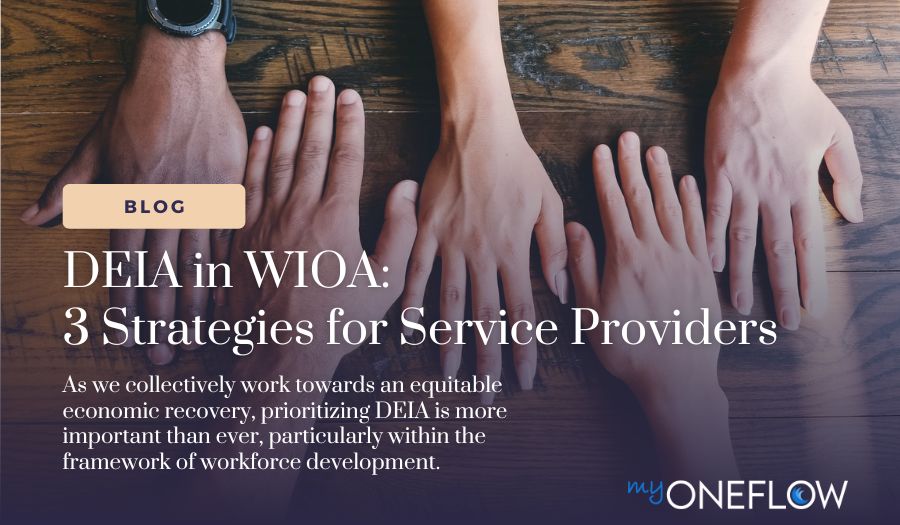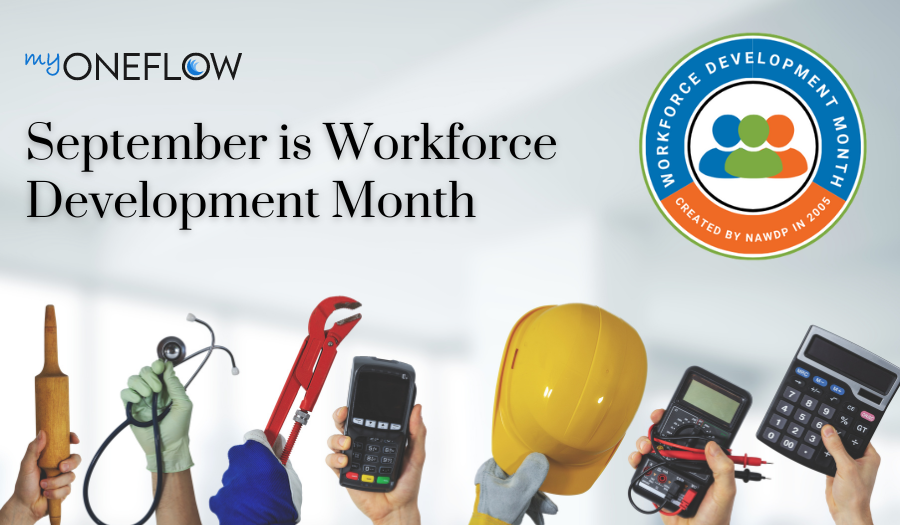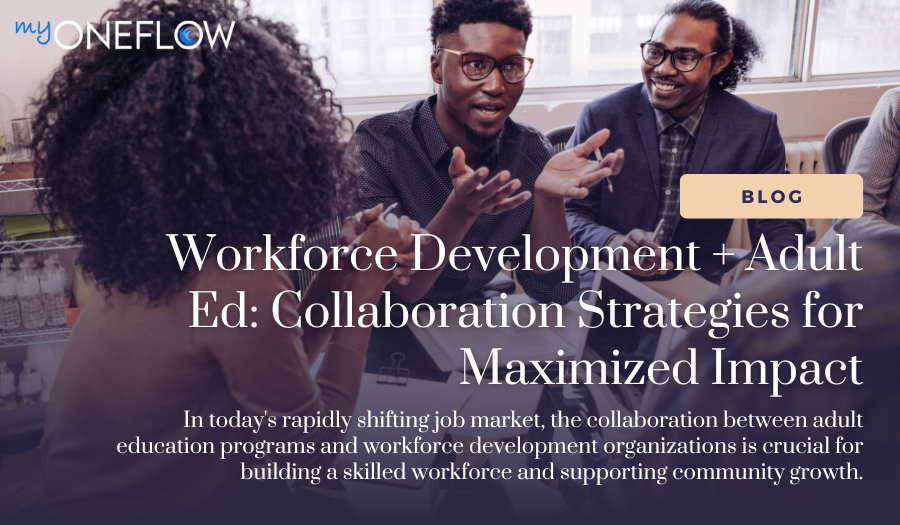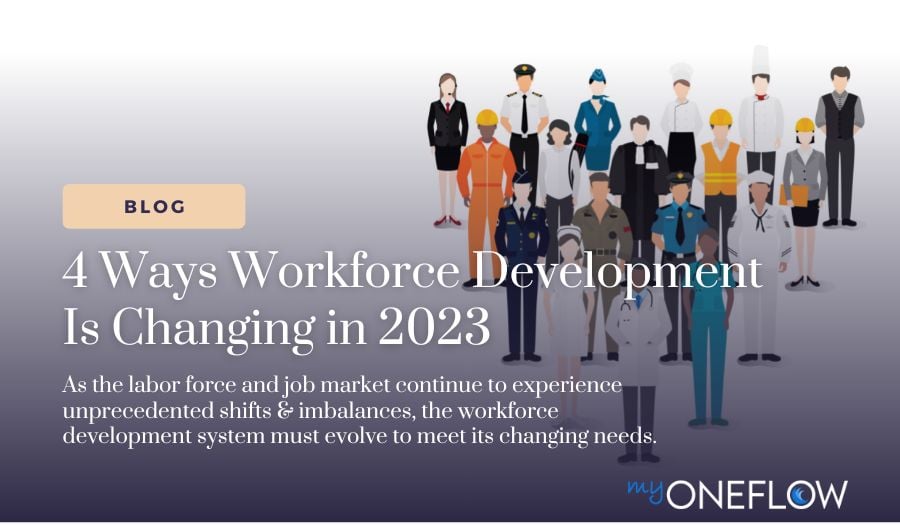September Is National Workforce Development Month
Workforce Development Month was started in 2005 by the National Association of Workforce Development Professionals (NAWDP). The goal was to raise...
4 min read
 Emily Sleister
Feb 10, 2023 2:50:58 PM
Emily Sleister
Feb 10, 2023 2:50:58 PM

This article was last updated on 1/30/2025
According to the Department of Labor, "WIOA is landmark legislation that is designed to strengthen and improve our nation's public workforce system and help get Americans, including youth and those with significant barriers to employment, into high-quality jobs and careers and help employers hire and retain skilled workers."
WorkforceGPS is sponsored by the Employment and Training Administration of the U.S. Department of Labor and provides training and resources for workforce professionals. In a recently updated post titled "DEIA 101: Embedding DEIA into Your Workforce Practices", they note that "Diversity, Equity, Inclusion, and Accessibility (DEIA) topics should be at the forefront of workforce conversations in the current climate."
In this article, we’ll discuss DEIA within the workforce context, the importance of DEIA, and specific ways that WIOA service providers can prioritize DEIA in their organizations and communities.
This is WorkforceGPS's definition of DEIA through a workforce lens, taken from a webinar:
Workforce diversity is an organizational commitment to culture and policies that ensure a range of people with various national origin, language, race, color, disability, ethnicity, gender, age, religion, sexual orientation, gender identity, socioeconomic status, veteran status, and family structures are supported and celebrated.
Equity, in workforce services, is the provision of intentional supports that are tailored to individual needs and respond to the history of unequal advantages and disadvantages in our economic system.
Inclusion is a positive culture connecting each employee to the organization, personal power, and their peers, which celebrates authenticity, accountability, and agency, so that everyone can participate and contribute to their full potential.
The facilitation of full and independent access for all people to employment, facilities, services, and information through intentional design, development of accommodations, and respect for the wide range of human ability.
The economic fallout caused by the COVID-19 pandemic shone a long-overdue light on many systemic workforce inequities faced by marginalized populations. Racial and ethnic minorities were unemployed at higher rates during COVID and were also overrepresented in frontline jobs. In general, marginalized populations, including people of color, women, working parents, and LGBTQ+, face a number of systemic inequities in the workplace, such as:
These same communities may also face unique challenges in the workplace, such as:
Beyond the obvious benefits of DEIA to marginalized communities, there are also significant benefits to employers. Research shows that more diverse companies are more successful in their relative industries. On average, more diverse companies have:
By investing in DEIA strategies, workforce development organizations can improve economic outcomes for employers and communities alike.
Collecting actionable data is a critical first step for understanding and serving a diverse community. Data can help you understand:
This information can help you identify areas of improvement in your pipeline, create a plan for improving service delivery, and measure outcomes as you move forward.
Community-based organizations can be a valuable bridge between service providers and their clients. The different groups within your community are unique, and strategies for support are not one-size-fits-all. Starting a conversation with local CBOs is critical to understanding the needs of the communities you serve.
Another barrier is that many job seekers don’t know that better opportunities exist. Or individuals are working two to three jobs and simply don’t have the time to consider investing in an alternative. Many communities share information through word of mouth, particularly if English is the second language or not spoken at all. CBOs can help you get in front of job seekers by disseminating information through specific and effective channels for the populations in your community.
Systemic gaps in service availability, such as translation services, legal assistance, and digital literacy, can perpetuate barriers to access for marginalized communities. Investigate the service gaps that affect your clients and prioritize meeting those needs. Use automated referrals to connect your clients to partner agencies that can offer support in areas of client-indicated need. Make sure your provided resources are available in the primary languages spoken by members of your community. Create navigation options that cater to various levels of digital literacy, depending on the populations you serve. Mobile-first access and integrated translation features go a long way toward improving access.
WIOA case management software like myOneFlow can support your organization's DEIA goals without adding additional administrative burden on your staff. myOneFlow makes it easy to configure a platform that meets the specific needs of your unique community with AI-powered workflows that automatically create a personalized experience for every client. It collects data through a single, common intake form so you can easily report on your client populations and measure outcomes. Contact our team today to discuss your organization’s needs and schedule a personalized demo.

Workforce Development Month was started in 2005 by the National Association of Workforce Development Professionals (NAWDP). The goal was to raise...

Effective workforce systems are rooted in collaboration. Under the Workforce Innovation and Opportunity Act (WIOA), workforce development agencies...

The U.S. workforce has experienced rapid change since the onset of the pandemic in 2020. Between the transition to virtual/hybrid work, the immense...